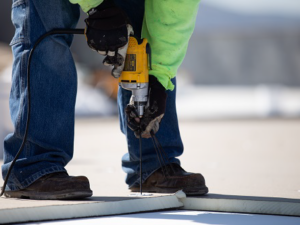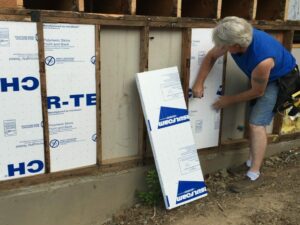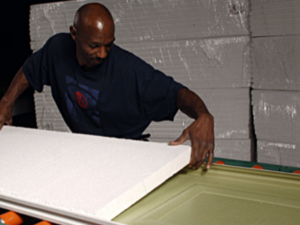Originally published via Brandpoint Newspaper
 In the typical American home, heating and cooling account for 50 to 70 percent of total energy use, according to the U.S. Department of Energy (DOE). Yet, much of that energy is wasted, leading to higher energy bills for homeowners.
In the typical American home, heating and cooling account for 50 to 70 percent of total energy use, according to the U.S. Department of Energy (DOE). Yet, much of that energy is wasted, leading to higher energy bills for homeowners.
The DOE notes that the leading causes of energy waste in most homes are inadequate insulation and air leakage. Wasted energy costs homeowners hundreds of dollars or more per year and takes a toll on the environment in the form of greater greenhouse gas emissions. But avoiding these wasteful practices is easy with some simple checks to your home and DIY insulation.
“A couple of areas in the home that are notorious for insulation problems are basements and crawlspaces,” says insulation expert, Ram Mayilvahanan of Insulfoam. “Many people discount insulation in their basements and crawl spaces because they are near the ground. However, the connections from crawl spaces, foundations, and ground footings to the actual house are areas that need to be properly insulated and sealed against air leaks. This can account for 30 percent of the heating and cooling energy loss for the average home.”
In crawlspaces and unfinished basements, areas to check for adequate insulation are on the foundation walls and the floor joists. “I was horrified when I first went into the crawlspace and saw the fiberglass insulation falling out of the floor,” says Troy Brown, a Seattle area homeowner. “It might as well not have even been there – and the home was only 20 years old.”
The DOE has developed a “Do-it-Yourself Guide to Sealing and Insulating with Energy Star,” which offers tips for creating tighter, well-insulated basements, crawl spaces and even attic hatches using rigid insulation, caulk and cans of expanding spray foam, among other materials.
“An easy, do-it-yourself fix for crawlspace, basement or attic hatch insulation is EPS (expanded polystyrene) foam,” notes Insulfoam’s Mayilvahanan. “EPS rigid foam insulation panels are easy to cut to size and fit into tight spaces, they are lightweight to carry and help keep the home warm, without the mess of fiberglass or loose cellulose fibers.”
As Americans look back on one of the coldest winters on record and get ready for the hot summer months, now is an ideal time to prepare your home for demanding weather conditions. A well-insulated home not only saves you money and reduces pollution, it is more comfortable to live in year-around.




